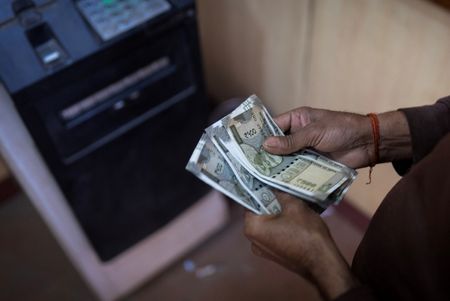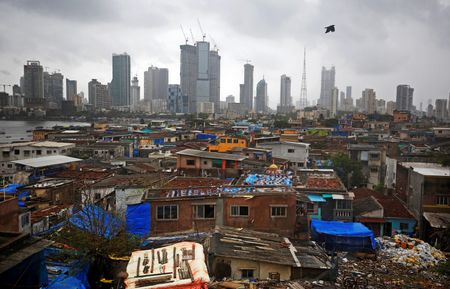By Jaspreet Kalra
MUMBAI (Reuters) – The Indian rupee remained under pressure on Tuesday, as dollar demand from importers and weakness in foreign portfolio flows continued to drag it towards the 87 to the U.S. dollar mark, its weakest level since March.
The rupee hit a four-month low of 86.9150 against the U.S. dollar before closing at 86.8150, down 0.2% on the day.
Over the last 15 sessions, the rupee has closed stronger only twice.
Traders and FX sales executives attribute the weakness to uncertainty over U.S.-India trade negotiations, weak portfolio flows and dollar demand from importers.
While exporters were active near 86.50 last week, the next bout of dollar-selling interest is likely around 87-87.10 levels, a salesperson at a large foreign bank said.
The risk of the rupee coming under further pressure will be among the considerations for the Reserve Bank of India at its upcoming policy review next week, economists at BofA Global Research said in a note.
They expect the central bank to keep rates unchanged and “observe transmission of existing cuts and measures, before choosing the future course of action.”
On the day, the dollar index fleetingly rose to the 99 handle as the euro fell to a one-month low, with investors sobering up to the fact that terms of the trade deal between the U.S. and the European Union favoured the former.
Asian currencies were steady to modestly weaker, with the Indonesian rupiah leading losses.
The rupee and the Indonesian rupiah are among the worst performing regional currencies this year, down over 1% each.
Globally, investors’ focus is on the Federal Reserve’s policy decision, due on Wednesday.
The Fed is widely expected to keep rates unchanged but commentary from Chair Powell and whether the decision is unanimous will be in focus for investors to gauge the potential for future cuts.
(Reporting by Jaspreet Kalra; Editing by Mrigank Dhaniwala)









